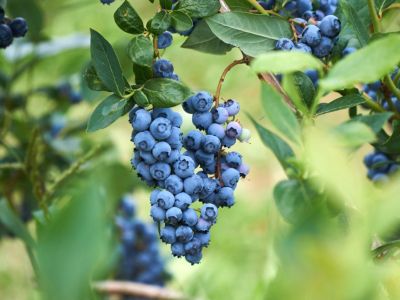The bad news is that you probably won’t be able to completely eradicate the disease. The good news is that septoria leaf spot control is possible if you catch it early enough.
Causes of Septoria Leaf Spot of Blueberries
The fungus that causes septoria leaf spot in blueberries lives on weeds and plant debris, especially infected leaves that drop from the plant. It thrives in damp conditions, and the spores are splashed on stems and leaves by wind and water.
Symptoms of Blueberries with Septoria Leaf Spot
Septoria leaf spot on blueberries is easy to recognize by the small, flat or slightly sunken lesions on stems and leaves. The lesions, which have gray or tan centers with purplish brown margins, tend to be more severe on young plants with tender leaves, or on the lower branches of larger plants. Sometimes, tiny black spots, which are actually spores, develop in the center of the spots. Soon, leaves may turn yellow and drop from the plant. Symptoms tend to be more severe on young blueberry bushes with tender leaves, or on the lower branches of larger plants.
Treating Blueberry Septoria Leaf Spot
Septoria leaf spot control begins with prevention.
Plant disease-resistant cultivars. Spread a layer of mulch beneath the blueberry bushes. The mulch will prevent spores from splashing on the foliage. Water at the base of the plant and avoid overhead irrigation. Prune blueberry bushes properly to ensure proper air circulation. Similarly, allow sufficient distance between plants. Control weeds. Spores often live on the foliage. Rake and burn fallen leaves and plant debris, as the spores overwinter in infected plant matter. Fungicides may help if you spray them before symptoms appear, and then repeat every couple of weeks until the end of summer. A number of chemical fungicides are available, or you can try organic products containing potassium bicarbonate or copper.
